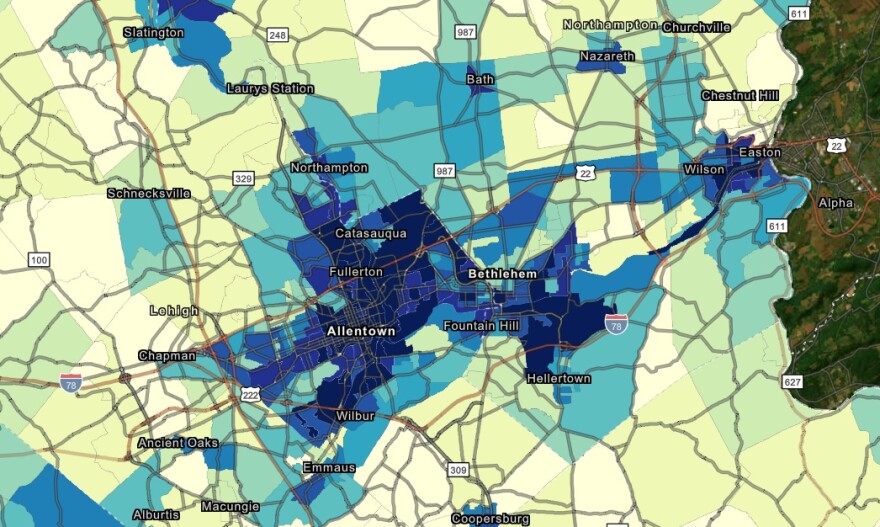- The state Department of Environmental Protection held a its first public comment meeting in Harrisburg
- Officials are seeking feedback on their new environmental justice policy with convenings across the state
- There are no in-person meetings scheduled for the Lehigh Valley
BETHLEHEM, Pa. — It takes investment to fight climate change, John Barkanic argued last week — and lenders or grantmakers shouldn’t be able to deny a resident or an organization based on their zip code.
“The financial institutions, the banks and even the credit unions, when they go to basically loan money to a company or an individual, they'll use the zip code of that individual as a criterion to establish whether or not they're going to issue the loan and move forward with it,” said Barkanic, a chemist and engineer who works with Northampton County Community College’s Emerging Technology Applications Center. “And the zip code alone by itself is one of those things that just basically fosters arrested development in those communities.
“ … So, I'd like to see that thing disappear completely.”
Barkanic was one of just more than 30 people who attended the state Department of Environmental Protection’s virtual public comment meeting on Oct. 11. Scheduled for two hours, but ending in less than an hour, officials took comments from a handful of residents about the agency’s new environmental justice policy. Feedback will be collected until Nov. 30.
While the Lehigh Valley is the third largest metropolitan area in the commonwealth, there are no in-person meetings scheduled here.
"When you have people applying for credit or people applying for a loan or people applying for grants, they shouldn't really be looking at the zip code as criteria for whether or not someone can meet their financial obligations and pay back the loan. So, that's my concern."John Barkanic
“All of these things to make these positive changes to reduce the impact of their processes on our climate take an investment, some sort of grant or a loan of some sort,” Barkanic said. “ … When you have people applying for credit or people applying for a loan or people applying for grants, they shouldn't really be looking at the zip code as criteria for whether or not someone can meet their financial obligations and pay back the loan. So, that's my concern.”
State officials in mid-September adopted an interim final Environmental Justice Policy, focused on creating environmental equity throughout the commonwealth. With that foundation already in place, officials said the meetings will act as a platform for residents or organizations to raise thoughts, concerns and suggestions.
In order to find areas of the state experiencing inequity, officials created a system and mapping tool to highlight areas in need as an environmental justice or “EJ Area.” Those are census tracts in which 20% or more people live at or below the federal poverty line, and/or 30% or more identify as a non-white minority, based on data from the U.S. Census Bureau and the federal guidelines.
Of the Valley’s major cities, Allentown, Bethlehem, and Easton, all have tracts categorized as an Environmental Justice Area, according to PennEnviroScreen, the state’s mapping and screening tool.
Redlining wasn’t the only point of concern.
“There really should be a more coordinated environmental justice function” across state agencies, said Freda Tepfer of Erie. She also voiced her concerns about air quality.
“You're looking at area impacts to ozone, regional ozone data, but there's such a thing as a micro-scale impact,” Tepfer said. “And that would be if, say somebody was standing, a group of students were standing, waiting for the bus and a whole bunch of semi trucks were turning there.
“That is not measured. That is not considered,” she continued. “That is something that is falling through the cracks. So somehow there needs to be a way of addressing microscale air pollution impacts.”
Upcoming meetings
There will be seven in-person public comment meetings and one more hosted virtually. In-person meetings will be held in Philadelphia, Scranton, Harrisburg and Pittsburgh.
The next virtual meeting is scheduled for Oct. 25. For more information or to register, visit the DEP’s website.


